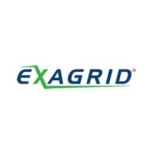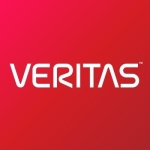What is our primary use case?
Most of my customers utilize this solution in the banking sector. They use it for their banking applications. They use it as their main storage.
What is most valuable?
One of the features that are so nice and which the bank loves so much about the NetApp FAS Series is its cloning feature. You can clone a database of any size, and when you clone it, the clone itself at the time it is created only occupies a very, very small footprint on the storage. It is when you sever the clone from the main database that you'll have a larger footprint.
For example: You have a database of one terabyte, then you clone that, and it will occupy just a few gigabytes. This means you now have a clone which you can use for a number of things: reporting, backup, or anything you like. You can even use it to test a new product you are trying to bring into the market. However, the moment you sever the clone from the main database, then it becomes WORM-free terabytes on its own, so that's one advantage.
The other advantage is that when you want to do a backup no matter the size of the database, you can do a snapshot. The snapshot takes up a very tiny space on the disc. From that snapshot, you can then take your data and migrate it to a backup storage. The backup storage could be via disc storage. It could be cheap and you can migrate it without any performance implications on the production systems, and that's very, very good.
You can also do replication. You can do one-to-one replication when you have a multi storage and replicate it to under storage, which is located long distance from where you are running your production system. You can do one too many replications and that is okay. You can replicate the data, not just to another data storage, but to multiple data storages, so there's flexibility.
This solution also has deduplication capabilities, so you can compress the data and deduplicate it so that the space to occupy, or the footprint becomes smaller.
There is a lot of data management tools today, and in the past you have to buy your data management tools separately. At present, when you buy NetApp storage, all the software tools are made available to you as a bundle, so that's another thing I like about the NetApp FAS Series.
What needs improvement?
The only improvement to this solution that I can propose is for NetApp to make the price more attractive. If the price is more attractive, then it will have a bigger market share. I can't think of any other area for improvement because the price is the only one that really comes to mind.
For how long have I used the solution?
I've been dealing with the NetApp FAS Series since 2003.
What do I think about the stability of the solution?
This solution is very, very, very, very stable. Notice how I mentioned "very" a few times. You can rely on this solution because of its stability.
What do I think about the scalability of the solution?
The NetApp FAS Series is scalable.
How are customer service and support?
Technical support from NetApp is excellent.
How was the initial setup?
In general, the setup for this solution is straightforward.
If the customer is migrating from a non NetApp storage to a NetApp storage, what we have to do is to map all the data from the non NetApp storage to the NetApp storage, after we have done the initial setup and configuration. Once we've completed that, from there, the customer can use the NetApp FAS Series straight away. We've done quite a lot of that.
An example is the case of Novacom: a telecommunications company. They were using EMC at that time, so we migrated that data from EMC to another platform, and it went very well. Now, if you're migrating from a NetApp storage to another NetApp storage, e.g. your current NetApp solution is already obsolete, then you want to do a technical refresh and you bought the latest version of the solution, so migration from NetApp to NetApp is the easiest. It will be the easiest data migration because all the tools are there.
What's my experience with pricing, setup cost, and licensing?
Pricing for this solution is not very high, but could still be improved and made more attractive.
What other advice do I have?
I've been a NetApp reseller for more than 10 years. I've supplied NetApp storage solutions to quite a number of customers in Nigeria, particularly in Lagos, so I have familiarity with the NetApp products, but that doesn't mean that I've sold all the various types. I've not sold all the various types, but I've sold quite a lot of backup storages, even when they were still producing virtual tape libraries.
My customers have been using NetApp for more than 10 years. In Nigeria, the most popular NetApp product is the FAS series. My customers always start with FAS. I've just placed an order for a NetApp Storage Acceleration Appliance (SA300) for Unity Bank of Nigeria. The NetApp FAS products: these ones are the most popular products in Nigeria, but there also other variants here.
Scalability and reliability are what my customers like about the NetApp FAS Series.
How long the full deployment for this solution takes depends on the complexity of the environment. It also depends on data volume. In some cases, you can get it done within two days, and in some cases you can get it done within one week to two weeks maximum. It could take up to two weeks when migrating from a non NetApp storage to NetApp storage. Otherwise, deployment can go very, very fast.
My customers love NetApp a lot.
The number of users of this solution, particularly those in the commercial banks, depends on the size of the customer base of those banks. The customers of the commercial banks are the ones interfacing with the commercial banking application, and there are usually millions of customers, but all of them cannot be on the application at the same time.
There are also internal users of NetApp within the bank itself: the bank staff who are making use of it for their normal day to day work, e.g. when closing at the end of the day, at the end of the month, or at the end of the year, etc. When you take into consideration the customers of the banks, the number of users of this solution would be millions.
I'm giving the NetApp FAS Series a rating of nine out of ten.
Which deployment model are you using for this solution?
On-premises
Disclosure: I am a real user, and this review is based on my own experience and opinions.










Hi all,
When i started with Netapp, i had doubts about performance on the SAN environments, but when you know best the technology and implement using best practices recommended by Netapp you don´t have any issue about the performance.
You can´t configure Netapp like other storage like EMC,Fujitsu or Hitachi, because the concept is too different,
Here we have FAS6200 series running 8 Oracle Rac with 3 node each ,VMware with 25 servers ESXi and 600 virtual machines, Hyper-V and some NFS exported to application on the same box and i did not had any problems so far.
The secret to Netapp is that you must have Flash Cache on the controller, how much more you have better will be your performance, because the write is done on the anywhere file system and to read you will have flash cache to help your application.
Good Luck
Regards
Ivan